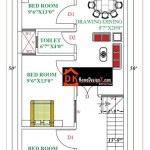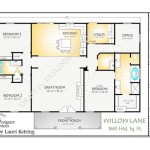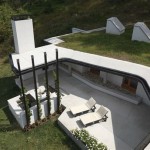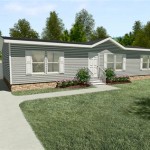A bluebird house plan refers to a set of specifications and guidelines for constructing a nesting box designed specifically to attract and support eastern bluebirds. These meticulously designed structures provide a safe and suitable environment for bluebirds to breed, nest, and raise their young.
Bluebird house plans typically include detailed instructions on materials, dimensions, and construction techniques. They often incorporate features such as a small entrance hole to deter larger birds, ventilation holes for proper airflow, and a drainage hole to prevent water accumulation. By adhering to these plans, individuals can construct bluebird houses that meet the specific needs and preferences of these vibrant and beloved avian species.
In the following sections, we will delve deeper into the intricate details of bluebird house plans, exploring their essential components, construction considerations, and the benefits they offer to bluebird populations and the wider ecosystem.
Bluebird House Plan: 9 Important Points
- Specific Dimensions
- Precise Entrance Hole
- Proper Ventilation
- Drainage Hole
- Predator Protection
- Durable Materials
- Appropriate Location
- Regular Monitoring
- Responsible Disposal
Adhering to these guidelines ensures the creation of bluebird houses that contribute to the conservation and well-being of these cherished birds.
Specific Dimensions
The dimensions of a bluebird house plan are crucial to ensure the comfort and safety of its avian occupants. The overall size of the house should be large enough to provide ample space for nesting and raising young, while adhering to specific measurements that align with the size and habits of bluebirds.
The interior floor space should measure approximately 5 inches by 5 inches, providing sufficient room for the nest and incubating eggs. The height of the house should be around 6 to 8 inches, allowing for adequate headroom and ventilation. The depth of the house, from the front to the back wall, should be approximately 6 to 8 inches as well, ensuring a comfortable depth for nesting.
The entrance hole, strategically placed near the top of the front wall, plays a critical role in the house’s functionality. The size of the entrance hole should be precisely 1.5 inches in diameter. This specific dimension allows bluebirds easy access to their nest while deterring larger birds, such as house sparrows, from entering and potentially harming the bluebird eggs or chicks.
Adhering to these precise dimensions when constructing a bluebird house is essential to ensure its suitability and appeal to these beautiful birds. By providing a well-sized and proportioned nesting space, you increase the chances of attracting bluebirds to your property and supporting their successful breeding efforts.
Precise Entrance Hole
The entrance hole of a bluebird house plan serves as a critical access point for bluebirds while simultaneously deterring larger, unwanted birds. Its precise dimensions play a pivotal role in ensuring the safety and functionality of the nesting box.
- Prevents larger birds from entering: An entrance hole with a diameter of 1.5 inches effectively prevents larger birds, such as house sparrows and starlings, from entering the bluebird house. These larger birds pose a threat to bluebirds, as they may compete for nesting space, damage eggs, or even kill chicks.
- Allows easy access for bluebirds: The 1.5-inch diameter hole is perfectly sized for bluebirds to enter and exit the house without difficulty. This size provides ample space for the birds to move in and out, while still preventing larger birds from gaining access.
- Protects chicks from predators: The small size of the entrance hole also helps to protect bluebird chicks from predators. Larger predators, such as snakes and cats, cannot fit through the hole to reach the chicks inside.
- Reduces nest competition: By deterring larger birds from entering the bluebird house, the precise entrance hole helps to reduce competition for nesting space. This increases the chances of bluebirds successfully raising their young.
The precise dimensions of the entrance hole are a crucial aspect of a bluebird house plan. By adhering to the recommended diameter of 1.5 inches, you can create a nesting box that is both accessible to bluebirds and protective against larger birds and predators.
Proper Ventilation
Adequate ventilation is crucial for maintaining a healthy and comfortable environment within a bluebird house. Proper airflow helps to regulate temperature, prevent moisture buildup, and reduce the risk of respiratory problems for the nesting birds.
- Regulates temperature: Ventilation allows air to circulate freely through the bluebird house, helping to keep the temperature inside the box stable. This is especially important during hot weather, as bluebirds can suffer from heat stress if the house becomes too warm. Proper ventilation helps to prevent overheating and ensures a comfortable environment for the birds.
- Prevents moisture buildup: Ventilation helps to prevent moisture from accumulating inside the bluebird house. Moisture can lead to mold and mildew growth, which can be harmful to the birds’ health. Proper ventilation allows moisture to escape, keeping the house dry and preventing the growth of harmful microorganisms.
- Reduces the risk of respiratory problems: Good ventilation helps to reduce the risk of respiratory problems for the nesting birds. Poor ventilation can lead to the buildup of harmful gases and fumes inside the house, which can irritate the birds’ respiratory systems. Proper ventilation ensures that the air inside the house is fresh and free of harmful pollutants.
- Prevents parasites and diseases: Proper ventilation helps to prevent the spread of parasites and diseases within the bluebird house. Parasites and diseases can thrive in humid, poorly ventilated environments. Good ventilation helps to keep the house clean and dry, reducing the risk of parasites and diseases affecting the birds.
Ensuring proper ventilation in a bluebird house is essential for the health and well-being of the nesting birds. By providing adequate airflow, you can help to regulate temperature, prevent moisture buildup, and reduce the risk of respiratory problems, parasites, and diseases.
Drainage Hole
A drainage hole is an essential component of a bluebird house plan, serving the critical purpose of preventing water accumulation and maintaining a dry and healthy nesting environment for the birds.
- Prevents water accumulation: The drainage hole allows excess water to drain out of the bluebird house, preventing water from accumulating on the floor. Water accumulation can lead to a damp and humid environment, which can be harmful to the birds’ health and can also damage the nest and eggs.
- Prevents mold and mildew growth: A dry nesting environment helps to prevent the growth of mold and mildew, which can cause respiratory problems for the birds and can also damage the nest and eggs. The drainage hole allows moisture to escape, keeping the house dry and preventing the growth of harmful microorganisms.
- Prevents hypothermia in chicks: Nestlings are particularly vulnerable to hypothermia, which can occur if they are exposed to cold and wet conditions. The drainage hole helps to keep the nest dry and warm, reducing the risk of hypothermia in the chicks.
- Prevents damage to the house: Excess moisture can damage the materials used to construct the bluebird house, leading to rot and deterioration. The drainage hole helps to prevent water accumulation, which can prolong the life of the house and ensure that it remains a suitable nesting site for bluebirds.
Installing a drainage hole in a bluebird house is a simple but effective way to ensure the health and well-being of the nesting birds. By allowing excess water to drain out, the drainage hole helps to prevent a range of problems, including water accumulation, mold and mildew growth, hypothermia in chicks, and damage to the house itself.
Predator Protection
Placement and Height
The placement and height of a bluebird house play a crucial role in predator protection. Bluebird houses should be placed in open areas with good visibility, away from dense vegetation or structures that could provide hiding places for predators. The house should also be mounted at a height of at least 5 feet above the ground to deter ground-based predators such as cats and snakes.
Nest Box Design
The design of the nest box can also contribute to predator protection. Bluebird houses with small entrance holes, around 1.5 inches in diameter, help to prevent larger predators, such as raccoons and owls, from entering the box. Additionally, houses with sloping roofs and slick surfaces make it more difficult for predators to climb and access the nest.
Predator Guards
Predator guards are devices that can be attached to the entrance hole of a bluebird house to further deter predators. These guards come in various designs, such as metal plates or wire mesh, and are designed to prevent predators from reaching into the box and harming the birds or eggs.
Nest Monitoring
Regular monitoring of bluebird houses is important to detect any signs of predator activity. Checking the house for damage, feces, or other indications of predators can help you take prompt action to deter or remove the threat. If a predator is discovered, you may need to relocate the bluebird house to a safer location or take other measures to protect the nesting birds.
Durable Materials
Wood Types
The choice of wood for a bluebird house is crucial for ensuring its durability and longevity. Cedar is a popular choice due to its natural resistance to rot, insects, and moisture. Redwood and cypress are also suitable options, offering similar resistance to decay and weathering. These woods are naturally durable and can withstand the elements for many years without requiring extensive maintenance.
Treated Lumber
Pressure-treated lumber can be used for bluebird houses, but it is important to select lumber that has been treated with a bird-safe preservative. Some wood treatments contain chemicals that can be harmful to birds, so it is essential to choose a product that is specifically designed for use in birdhouses. Cedar lumber that has been naturally treated with a preservative is a good option, as it is both durable and bird-friendly.
Hardware
The hardware used to construct a bluebird house should also be durable and resistant to corrosion. Stainless steel or galvanized screws and nails are a good choice, as they will not rust or deteriorate over time. Avoid using regular steel hardware, as it can rust and weaken, compromising the integrity of the house.
Maintenance
Regular maintenance is essential to extend the lifespan of a bluebird house. Inspect the house annually for any signs of damage or deterioration. Clean the house thoroughly to remove any debris or nesting material, and make any necessary repairs. Applying a fresh coat of exterior paint or stain can also help to protect the wood and extend the life of the house.
Appropriate Location
Open Area with Good Visibility
Bluebird houses should be placed in open areas with good visibility, away from dense vegetation or structures that could provide hiding places for predators. Bluebirds prefer open areas where they can easily spot approaching predators and have a clear flight path to and from the nest box. Avoid placing the house near trees, shrubs, or buildings that could obstruct the birds’ view or make them vulnerable to attacks from predators.
Facing Southeast
The ideal orientation for a bluebird house is facing southeast. This position provides the house with morning sun, which helps to warm the nest and encourage egg-laying. It also offers protection from the prevailing winds and rain, which can damage the house and make it less attractive to bluebirds. Avoid placing the house facing north or west, as these directions receive less sunlight and may be more exposed to harsh weather conditions.
Height of 5 Feet or More
Bluebird houses should be mounted at a height of at least 5 feet above the ground. This height helps to deter ground-based predators, such as cats and snakes, from reaching the nest. It also provides the birds with a good view of their surroundings and allows them to quickly escape if they sense danger. Avoid placing the house too high, as this can make it difficult for the birds to access the nest and may expose them to strong winds.
Avoid Isolated Locations
Bluebirds are social creatures and prefer to nest in close proximity to other bluebird pairs. Avoid placing the nest box in isolated locations, as this can make the birds more vulnerable to predators and reduce their chances of finding a mate. Instead, consider placing the house in a cluster of bluebird houses or near other natural nesting sites, such as tree cavities or abandoned woodpecker holes.
Regular Monitoring
Regular monitoring of bluebird houses is crucial for ensuring the health and safety of nesting bluebirds. By checking the house periodically, you can detect any problems early on and take steps to resolve them. Here are four key reasons why regular monitoring is important:
- Checking for predators: Predators, such as snakes, cats, and raccoons, can pose a significant threat to bluebirds and their nests. During your monitoring visits, carefully inspect the house and the surrounding area for any signs of predator activity, such as footprints, droppings, or scratch marks. If you discover evidence of predators, take steps to deter them, such as installing a predator guard or moving the house to a safer location.
Signs of predators can be clear and easy to see, like a snake curled up near the house or a cat’s paw prints in the dirt below. Other times, signs can be more subtle. For example, if you notice that the entrance hole has been enlarged, this could indicate that a predator has tried to force its way inside. Even if you don’t see any signs of predators, it’s still important to be vigilant and check for potential threats regularly.
Ensuring proper drainage: Proper drainage is essential for preventing water from accumulating inside the bluebird house. During heavy rains, water can enter the house through the entrance hole or cracks in the wood. If the house does not drain properly, the nest can become damp and moldy, which can harm the eggs and chicks. Check the drainage hole regularly to make sure it is clear of debris and functioning properly.
To test the drainage, you can pour a small amount of water into the house and observe how it drains out. The water should drain quickly and completely. If the water pools inside the house, the drainage hole may be clogged or blocked. Clean out the hole using a small stick or wire, and make sure there are no other obstructions preventing the water from draining.
Inspecting the nest: Regularly inspecting the nest inside the bluebird house allows you to monitor the progress of the nesting cycle and ensure that the eggs and chicks are developing properly. Check for any signs of damage to the nest, such as tears or holes. If the nest is damaged, you may need to repair it or replace it with a new one.
When inspecting the nest, be careful not to disturb the eggs or chicks. If you need to make any adjustments to the nest, do so gently and avoid touching the eggs or chicks directly. You can use a small spoon or a pair of tweezers to carefully move the eggs or chicks if necessary.
Monitoring bird activity: Observing the bird activity around the bluebird house can provide valuable insights into the nesting process. Note the frequency with which the birds are visiting the house, and pay attention to their behavior. Are they carrying nesting material? Are they feeding chicks? By monitoring bird activity, you can track the progress of the nesting cycle and identify any potential problems.
If you notice a sudden decrease in bird activity, this could indicate that something is wrong. The birds may have abandoned the nest due to a predator threat, a lack of food, or other factors. If you suspect that the birds have abandoned the nest, check inside to see if there are any eggs or chicks that need assistance.
Regular monitoring of bluebird houses is a simple but effective way to ensure the success of your bluebird nesting project. By checking the house periodically, you can identify and address any problems early on, giving the bluebirds the best chance of raising a healthy brood.
Responsible Disposal
Once a bluebird house has reached the end of its lifespan or is no longer suitable for nesting birds, it is important to dispose of it responsibly. Improper disposal can harm the environment and wildlife, so it is crucial to follow the proper steps to ensure that the house is disposed of in a safe and eco-friendly manner.
The first step in responsible disposal is to remove any nesting material or debris from the house. This material may contain parasites or diseases that could harm other birds or animals. Once the house is empty, it should be thoroughly cleaned with a mild soap and water solution to remove any remaining contaminants.
If the bluebird house is made of wood, it can be disposed of in a few different ways. One option is to burn the house in a controlled burn. This method is only recommended if you have the necessary safety precautions in place and can ensure that the burn will not spread to surrounding areas. Another option is to bury the house in a deep hole in your yard. This method is best suited for houses that are in poor condition and cannot be reused or recycled.
If the bluebird house is made of metal or plastic, it should be recycled according to your local recycling guidelines. Metal houses can be taken to a scrap metal recycling center, while plastic houses can be recycled through your curbside recycling program or at a local recycling center. By recycling these materials, you can help to reduce waste and conserve natural resources.
Responsible disposal of bluebird houses is an important part of being a responsible bird enthusiast. By following these simple steps, you can help to protect the environment and wildlife, and ensure that your bluebird house has a positive impact on the birds in your area.










Related Posts








